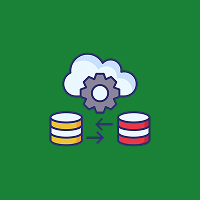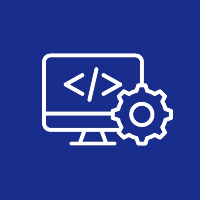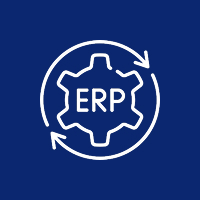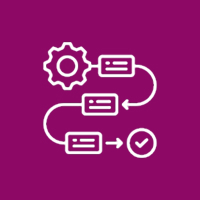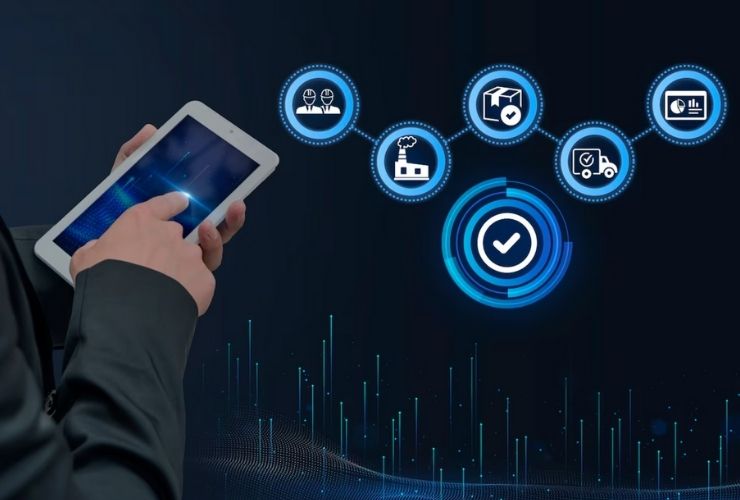In the current dynamic business environment, large companies depend heavily on ERP (Enterprise Resource Planning) systems to handle complex operations, automate workflows, and consolidate information across departments. However, a big challenge of effective ERP system integration is due to the number of applications involved, legacy systems, and data volumes on a large scale.
Integrating an ERP system more effectively is necessary for the improvement of operational efficiencies, data accuracy, and providing seamless communications between different business units. In this blog, we will look at the main components of a successful ERP integration process in large organizations, example miscommunications to avoid, and best practices for long-term ERP integration success.
Why is ERP Integration Important for Large Organizations
ERP integration allows different business systems – such as finance, HR, supply chain, and customer relationship management – to work together effectively. Benefits of this include:
- Data Centralization: A single source of truth for all business processes.
- Improved Decision-Making: Real-time access to accurate data empowers smarter decisions.
- Operational Efficiency: Better workflows and reduced manual-entry of data.
- Reduction of Errors: Less inconsistency and duplication of data between systems.
- Scalability: Growing and developing needs of large organizations and their operations.
Proper integration will shift the perspective of an ERP system, from a single tool into a complete, integrated platform focused on workplace productivity.
Common Challenges in ERP Integration
Despite its benefits, ERP integration can be complex for large enterprises due to:
- Legacy Systems: Older applications may lack modern integration capabilities.
- Data Silos: Inconsistent data formats and isolated systems can hinder seamless integration.
- Scalability Issues: Large volumes of transactions require robust architecture.
- Customization Complexity: Over-customized ERP modules can complicate integration.
- Change Management: Employee adaptation to new processes can slow down integration success.
Understanding these challenges is the first step toward developing an effective integration strategy.
Key Strategies for Optimizing
Conduct a Thorough System Assessment:
Analyze existing systems, data flows, and integration requirements before selecting ERP solutions.
Use Middleware and APIs:
Leverage integration platforms and APIs to connect disparate systems seamlessly.
Standardize Data Formats:
Ensure data consistency across departments to improve accuracy and reduce errors.
Automate Workflows:
Automate repetitive tasks like data synchronization, reporting, and approvals to enhance efficiency.
Implement Incremental Integration:
Integrate modules in phases to minimize disruption and allow smooth adoption.
Focus on Scalability:
Design the integration architecture to handle future business growth and increased data volumes.
Monitor and Optimize Continuously:
Track integration performance and identify areas for improvement to maintain operational excellence.
Best Practices for ERP Integration for Large Organizations
Involve the Right Stakeholder Early: More effective integration will occur when the IT, management, and business entities are aligned.
- Plan for Staff Training: Train staff to work in the new workflows from the beginning and help staff understand how the ERP supports changes in work.
- Establish Data Governance Policies: Think of governance, not governance as a premise of action. Data of its quality, security, and access all need policy-driven action.
- Utilize Cloud Based ERP Systems: There is more flexible ANT scalable deliverables in terms of implementations and even faster to the organization value stream.
- Keep Systems Updated: Regular updates will lead to improvements for both the ERP modules and the partner integration tools.
Implementing the best practice touchpoints will ensure an effective integration is in place and will bring the best possible ROI from relationships invested for your ERP.
In Summary
Optimizing an ERP Integration is essential to meet large organizational goals including adding efficiency, increasing data enhanced decision-making practices, and bringing integration of works from across different departments to increase capability. With planning in process, APIs, and/or Middleware knowledge, data standardization uses and issues are well considered along with promoting continual accountability for performance.
In a market that demands reactivity, decentralized data and methodologies are not sustainable. A properly integrated ERP helps organizations smoothly operate to scale in their work and continue to serve the market and customers timely and competitively.
Contact Us Today













 Database Development
Database Development










